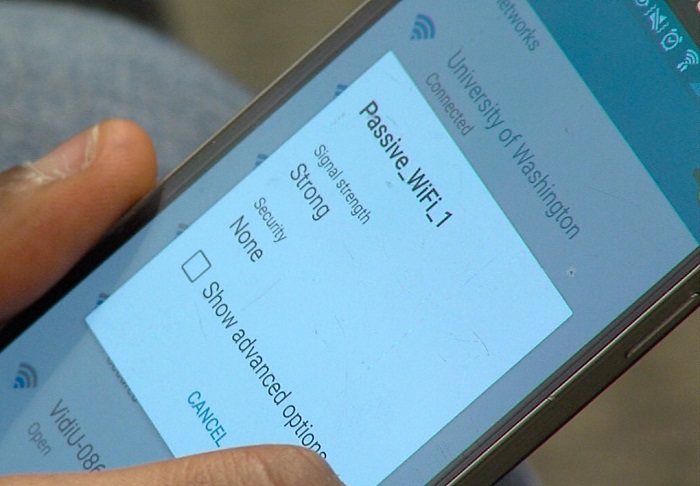A team of electrical engineers and computer scientists from the University of Washington has demonstrated the ability to generate WiFi signals using 10,000 times less power than modern-day methods.
Referred to as “Passive WiFi”, the system also consumes 1,000 times less power than existing energy-efficient wireless communication platforms like Bluetooth Low Energy and Zigbee.

According to MIT Technology Review, the technology is considered one of the 10 breakthrough technologies of 2016.
“We wanted to see if we could achieve Wi-Fi transmissions using almost no power at all,” said co-author Shyam Gollakota, a UW assistant professor of computer science and engineering. “That's basically what Passive Wi-Fi delivers. We can get Wi-Fi for 10,000 times less power than the best thing that's out there.”
Passive WiFi signals can be transmitted at bit rates of up to 11 megabits per second and decoded on any WiFi-connected device; that is, it does not need to be a device specially designed to pick up Passive WiFi signals.
While the speeds of this new technology are slower than that which can be considered maximum WiFi speeds, passive WiFi signals are 11 times higher than Bluetooth.
The team’s success with this technology came as a result of their decoupling the digital and analog operations involved in radio transmissions. Over the last two decades, the digital side of that equation has become increasingly efficient, but the analog components still require a lot of power.
So instead they assigned the power-intensive analog functions (e.g. producing a signal at a specific frequency) to a signaling device plugged into a wall. A collection of passive sensors then produce WiFi packets of information using very little power by reflecting and absorbing the signal using a digital switch.

In terms of real-world application, the team found that their passive WiFi sensors and a smartphone were able to communication with one another even at distances of 100 feet.
“All the networking, heavy-lifting and power-consuming pieces are done by the one plugged-in device,” said co-author Vamsi Talla, an electrical engineering doctoral student. “The passive devices are only reflecting to generate the Wi-Fi packets, which is a really energy-efficient way to communicate.”
And due to the fact that the sensors are creating actual WiFi packets, they’re able to communicate with any WiFi-enabled device presently on the market.
“Our sensors can talk to any router, smartphone, tablet or other electronic device with a Wi-Fi chipset,” said co-author and electrical engineering doctoral student Bryce Kellogg. “The cool thing is that all these devices can decode the Wi-Fi packets we created using reflections so you don't need specialized equipment.”
It’s widely believed this new type of technology will lead to new types of communication not previously thought possible due to energy demands outstripping available power supplies. Passive WiFi could also greatly simplify the growing market of data-intensive applications, especially when it comes to Internet of Things technologies within the home, along with wearable devices.
“Even though so many homes already have Wi-Fi, it hasn't been the best choice for that,” said co-author Joshua Smith, UW associate professor of computer science and engineering and of electrical engineering. “Now that we can achieve Wi-Fi for tens of microwatts of power and can do much better than both Bluetooth and ZigBee, you could now imagine using Wi-Fi for everything.”
To learn more, check out the clip below on Passive WiFi.
To read more, download Passive Wi-Fi: Bringing Low Power to Wi-Fi Transmissions
The University of Washington team will formally report their findings in a paper to be presented in March at the 13th USENIX Symposium on Networked Systems Design and Implementation.
Via the University of Washington
Advertisement
Learn more about Electronic Products Magazine





